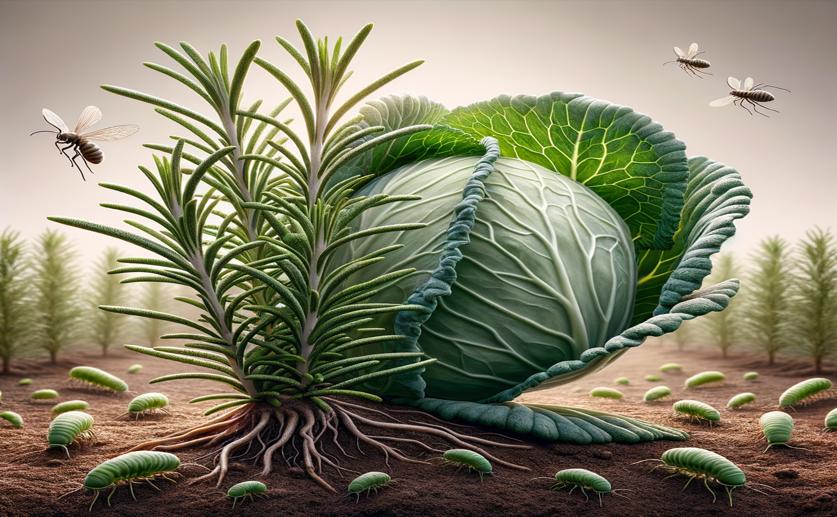
How Rosemary Scents Repel Cabbage Aphids in Push-Pull Farming
Greg Howard
13th March, 2024

Image Source: Natural Science News, 2024
Key Findings
- In a study on kale crops, rosemary was found to repel the cabbage aphid pest
- Aphids preferred kale scent over rosemary, but mixed scents reduced kale's attraction
- Identified rosemary compounds like Linalool could help farmers use fewer pesticides
References
Main Study
1) Electrophysiological and Behavioral Responses of Cabbage Aphid (Brevicoryne brassicae) to Rosemary (Rosmarinus officinalis) Volatiles, a Potential push Plant for Vegetable push-pull Cropping System.
Published 12th March, 2024
https://doi.org/10.1007/s10886-024-01485-y
Related Studies
2) Responses of the fall armyworm (Spodoptera frugiperda) to different host plants: Implications for its management strategy.
3) Responses of parasitoids to volatiles induced by Chilo partellus oviposition on teosinte, a wild ancestor of maize.
4) Electrophysiological and behavioural responses of the tea geometrid Ectropis obliqua (Lepidoptera: Geometridae) to volatiles from a non-host plant, rosemary, Rosmarinus officinalis (Lamiaceae).



 10th March, 2024 | Greg Howard
10th March, 2024 | Greg Howard